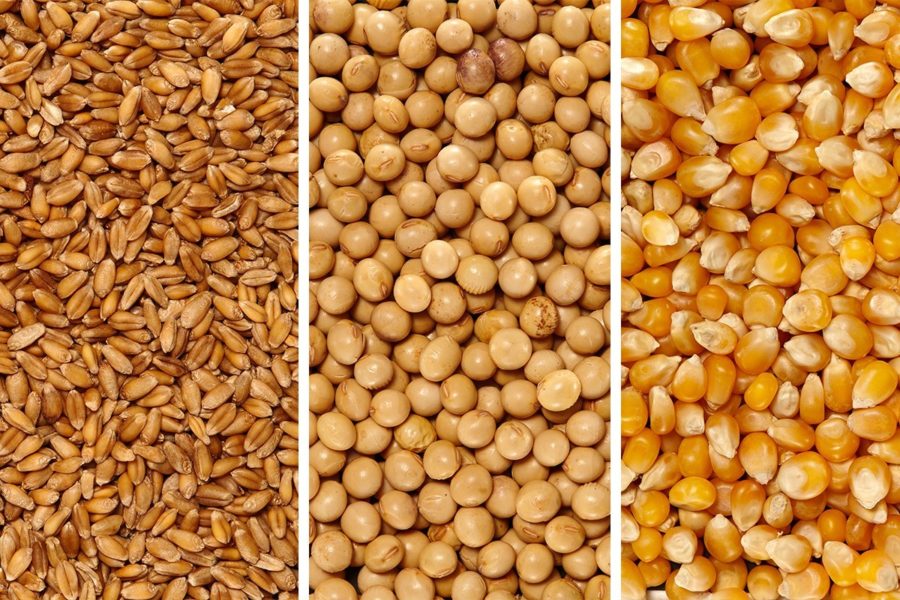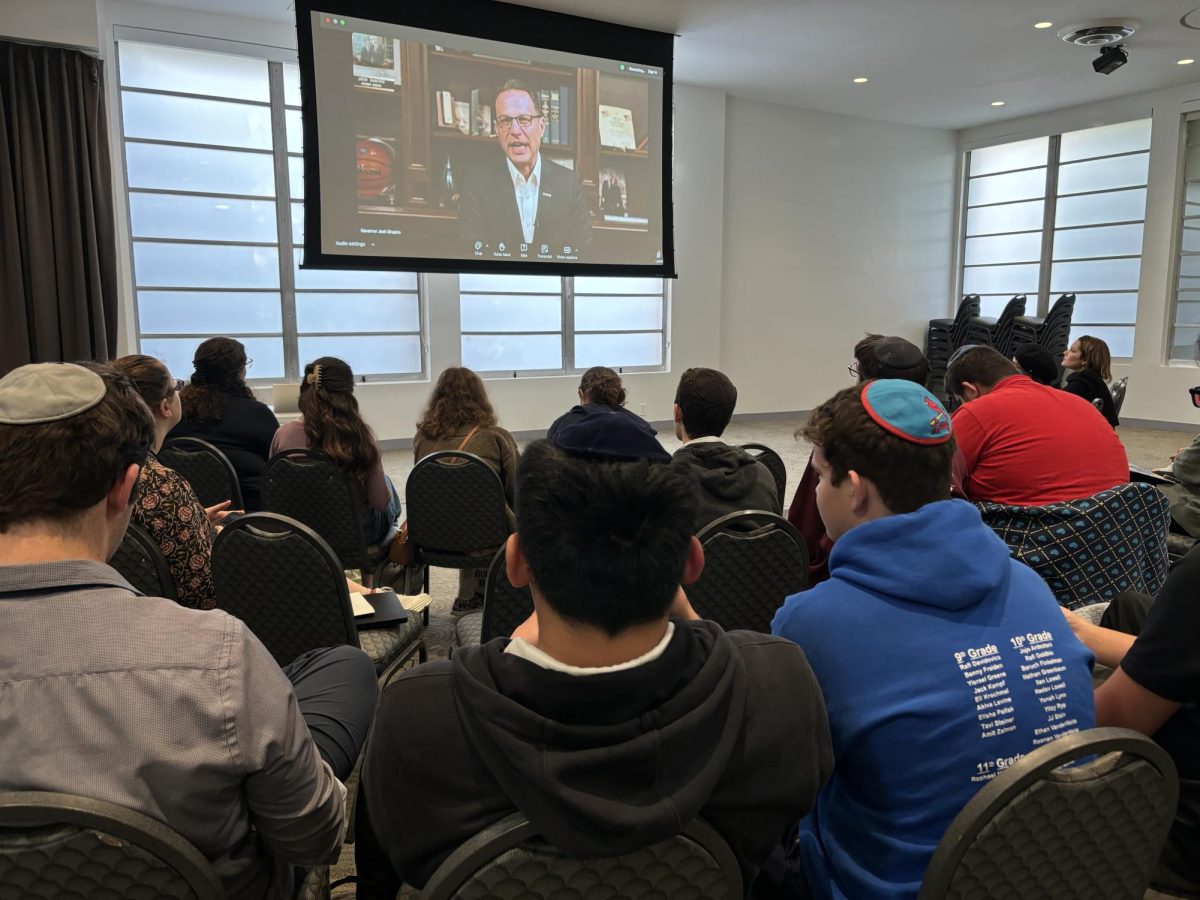Aside from last year, I have attended a catered program for every Pesach since I was fourteen months old. As a result, ironically, I’ve rarely had classic matzah brie or matzah pizza, and my leil haseder matzah balls often consisted of potatoes rather than matzah meal. All of these classic Pesach foods fall into the category of gebrochts — foods in which baked matzah comes in contact with a liquid, or in Hebrew: matzah sheruyah (“soaked matzah”). Pesach caterers avoid serving gebrochts foods to accommodate as many people as possible, including those (mostly chassidim) who do not eat gebrochts on Pesach.
Avoiding gebrochts, however, wouldn’t be nearly as difficult if not for a prohibition universally accepted by Ashkenazim against kitniyos; if not for this ban, rice bread and cornbread could be Pesach staples, as they are for Sephardim (who are permitted to eat kitniyos, including rice and corn).
The gemara in Pesachim 35a lists the five grains — wheat, barley, spelt, rye, and oat — from which matzah can be baked, and it derives from the text those same grains, when mixed with water, leaven and create forbidden chametz. Other grains, such as rice and millet, do not rise and are not chametz. Rabbi Yochanan ben Nuri dissents, but a discussion from Pesachim 114b shows that the rabbis rule against him.
The Rambam (Laws of Chametz and Matzah 5:1) explicitly rules that only the five primary grains are forbidden on Pesach, but kitniyos — like rice, millet, beans, and lentils — are permitted. The Tur (453) rules the same way, adding that while some abstain from kitniyos due to a fear that the forbidden grains might get mixed in, that is an extra stringency and not the way in which we practice. Since this seems pretty straightforward, what’s the issue?
In his commentary to the Tur, the Bach (453:1) cites the Sefer Mitzvos Katan (Smak), who forbids kitniyos because to someone not familiar, chametz flour and kitniyos flour look nearly identical. Although the Shulchan Aruch (453:1) rules like the Rambam and Tur, the Rema (ibid.) proclaims the Ashkenazic custom forbids kitniyos.
The Vilna Gaon (Biur HaGra 453:4) concurs with the Rema, first acknowledging the Tur’s fear that forbidden and permitted grains would get mixed up. Furthermore, even for well-sorted kitniyos, the Gra provides a source for the Smak’s concern that chametz and kitniyos flours look the same. The gemara (Pesachim 40b) tells of Rav Papi allowing the cooks to line pots during Pesach with a substance that Tosfos (Pesachim 40b) identifies as lentils. Rava chastises Rav Papi for lining pots with lentils in front of the servants, who will think the smeared lentils are actually one of the five prohibited grains. From here, the Gra learns that we fear the unlearned might think kitniyos are actually chametz (and thereby think chametz is permitted on Pesach).
The Mishnah Berurah (453:6) records both concerns — about the five grains and kitniyos being physically mixed, and that the flours look similar — when explaining the origin for the prohibition against kitniyos.
Although the ban on kitniyos seems universal among Ashkenazim (Sephardim hold like the Rambam and Shulchan Aruch who permit them), there exists practical debate over which foods classify as kitniyos.
To give one example, Ashkenazim widely avoid peanuts as a type of kitniyos during Pesach. Nevertheless, in a shiur entitled, “The Gedolim Not Enough People Know: Rav Kook & The Aderes” on YUTorah, Rabbi Hershel Shachter told a story from when the Mir Yeshiva relocated to Shanghai during World War II, and a student was snacking on some peanuts during Pesach, thinking it was permitted until a member of the custodial staff apprehended him for eating kitniyos.
In the same vein, Rabbi Moshe Feinstein (3:63) indicates that he might permit peanuts on Pesach. He sets a ground rule that due to the relatively weak origin of the prohibition against kitniyos, foods not known to those who established the decree and traditionally classified as kitniyos should not be included in the prohibition. (The general custom is to forbid peanuts, and one should consult with their rabbi before changing any practices.)
Rules regarding kitniyos diverge from the laws of chametz in significant ways due to the leniency of the former and the stringency of the latter. In particular, the prohibitions against owning and benefiting from chametz do not apply to kitniyos (Rema 453:1). (There exist other differences about mixing, nullification, and dishes that are beyond the scope of this article.)
Despite the debate over the classification of certain foods such as peanuts, the overall restriction on kitniyos was accepted by all Ashkenazim. However, the stringency against eating gebrochts foods was not.
The gemara (Pesachim 39b) clearly states that something already baked (i.e matzah) does not leaven again if it comes in contact with water. The Rambam (Laws of Chametz and Matzah 5:5) and Tur (463) bring this ruling down as halacha, and the Rema doesn’t even comment an alternative custom to the codification of the Shulchan Aruch (463:3).
So where does the custom of gebrochts come from? The Raavan, in his early commentary on Pesachim 39b, notes that some people have the custom not to dip their matzah in their soup on the night of the Seder. However, he rejects the premise that this custom developed due to a concern that the matzah would somehow become chametz, instead connecting the practice to the aspiration that the taste of matzah (undiluted by soup) should remain in one’s mouth all night.
However, the Shulchan Aruch HaRav (Shu”t 6) does rule against eating gebrochts. He argues that in his time (the late 18th century), bakers began preparing matzah quicker — a good thing in that it gave the matzah less time to rise, but it also increased the likelihood some flour might not bake all the way through. Because of this, the Shulchan Aruch HaRav held that the leftover flour might begin to rise if it were to come in contact with water, creating chametz.
In line with this ruling, many chassidim abstain from eating gebrochts. Most non-chassidim, on the other hand, act in accordance with the Shaarei Teshuva (460:10) and Mishnah Berurah (458:4), who reject the stringency against gebrochts. The Vilna Gaon similarly decided against prohibiting gebrochts, even eating baked matzah that had come in contact with liquid himself (Maaseh Rav 186).
Finally, to show that abstinence from gebrochts is a stringency and not required by the letter of the law, even those who don’t eat gebrochts during Pesach do so on the eighth day (outside of Israel), according to Rabbi Yaakov Goldstein in an article on the topic.
From the relatively simple command to not eat chametz during Pesach, the rabbis enacted stringencies. (Why Pesach, in particular, earns all of these safeguards is a topic for another time.) Because of concerns about mixing grains or similar-looking flours, an Ashkenazic custom developed to avoid kitniyos on Pesach. For a smaller portion of Ashkenazim, another tradition emerged prohibiting baked matzah from contacting liquid.
Although my family (thankfully) doesn’t have the custom to proscribe gebrochts on Pesach, the injunction against kitniyos is almost enough for me to wish I was Sephardic for the holiday — but only almost.
(For more intricate details that I won’t cover, I encourage you to dive into the cited sources, all of which come from the respective Orach Chaim sections. As always, before making any real-life decisions, consult with your local Orthodox rabbi or anyone else with semicha, a qualification I certainly do not possess.)
This story was originally published on March 23, 2021.












